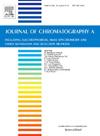Unlocking the future of colorectal cancer detection: Advances in screening glycosylation-based biomarkers on biological mass spectrometry technology
IF 3.8
2区 化学
Q1 BIOCHEMICAL RESEARCH METHODS
引用次数: 0
Abstract
The incidence of colorectal cancer (CRC) is increasingly affecting younger populations, with its mortality rate rising annually. However, current clinical diagnostic techniques, such as colonoscopy and CEA antigen testing, remain invasive and prone to false-positive results, complicating early diagnosis and intervention. Glycosylation, a key post-translational modification, plays an essential role in cellular function, physiological regulation, and disease processes. In recent years, mass spectrometry technology has emerged as a powerful tool for screening glycan biomarkers, owing to its exceptional separation capabilities and sensitivity. This review encompasses the advancements in CRC glycan biomarkers from 2016 to 2024, with particular emphasis placed on N/O-glycan biomarkers identified through mass spectrometry. Nonetheless, the intrinsic low abundance and polyhydroxy nature of glycans hinder the specificity and sensitivity of current glycan biomarkers. To overcome these limitations, this article outlines pretreatment strategies for N/O-glycans, including glycan release, enrichment, purification, and derivatization, in conjunction with relative quantification techniques and high-throughput bioinformatics tools for biomarker screening. These strategies are anticipated to enhance the efficiency and precision of glycan biomarker identification through mass spectrometry. These advancements hold significant promise for enhancing CRC prevention, diagnosis, and treatment, thereby potentially improving patient outcomes and quality of life.
开启结直肠癌检测的未来:利用生物质谱技术筛选糖基化生物标记物的进展
结肠直肠癌(CRC)的发病率正日益影响年轻人群,其死亡率也在逐年上升。然而,目前的临床诊断技术,如结肠镜检查和癌胚抗原检测,仍然具有侵入性,而且容易出现假阳性结果,使早期诊断和干预变得复杂。糖基化是一种关键的翻译后修饰,在细胞功能、生理调节和疾病过程中起着至关重要的作用。近年来,质谱技术凭借其卓越的分离能力和灵敏度成为筛选糖类生物标记物的有力工具。本综述涵盖了 2016 年至 2024 年期间 CRC 糖类生物标志物的研究进展,其中特别强调了通过质谱技术鉴定的 N/O 糖类生物标志物。然而,聚糖固有的低丰度和多羟基性质阻碍了目前聚糖生物标志物的特异性和灵敏度。为了克服这些局限性,本文概述了 N/O 聚糖的预处理策略,包括聚糖释放、富集、纯化和衍生化,并结合相对定量技术和高通量生物信息学工具进行生物标记物筛选。预计这些策略将提高通过质谱鉴定聚糖生物标记物的效率和精确度。这些进展为加强 CRC 的预防、诊断和治疗带来了巨大希望,从而有可能改善患者的预后和生活质量。
本文章由计算机程序翻译,如有差异,请以英文原文为准。
求助全文
约1分钟内获得全文
求助全文
来源期刊

Journal of Chromatography A
化学-分析化学
CiteScore
7.90
自引率
14.60%
发文量
742
审稿时长
45 days
期刊介绍:
The Journal of Chromatography A provides a forum for the publication of original research and critical reviews on all aspects of fundamental and applied separation science. The scope of the journal includes chromatography and related techniques, electromigration techniques (e.g. electrophoresis, electrochromatography), hyphenated and other multi-dimensional techniques, sample preparation, and detection methods such as mass spectrometry. Contributions consist mainly of research papers dealing with the theory of separation methods, instrumental developments and analytical and preparative applications of general interest.
 求助内容:
求助内容: 应助结果提醒方式:
应助结果提醒方式:


